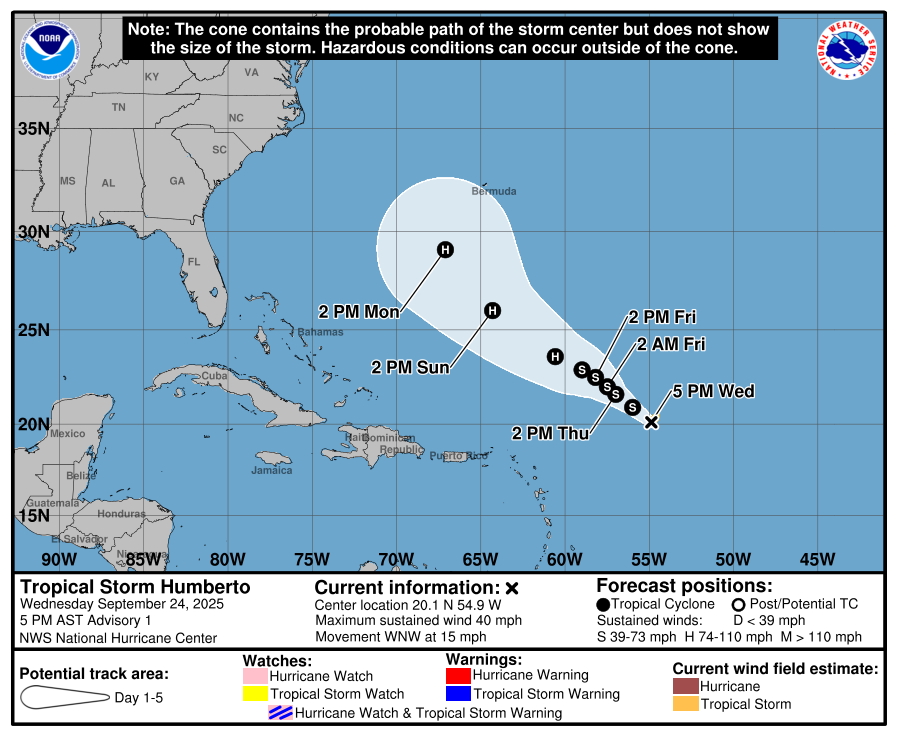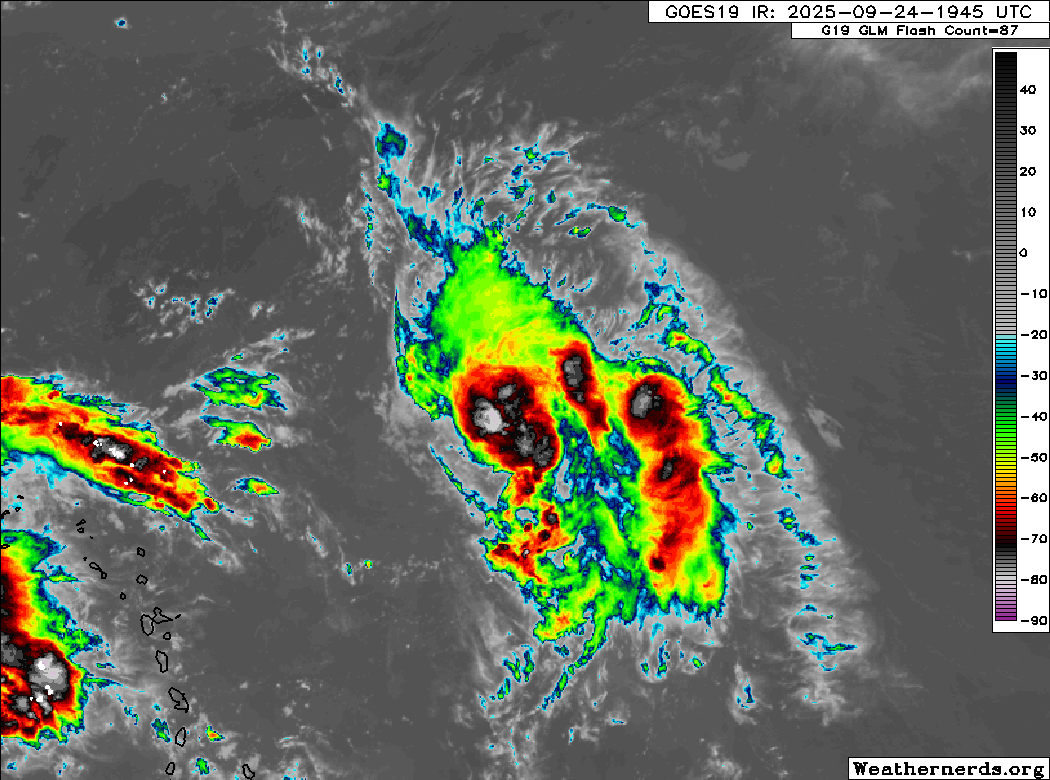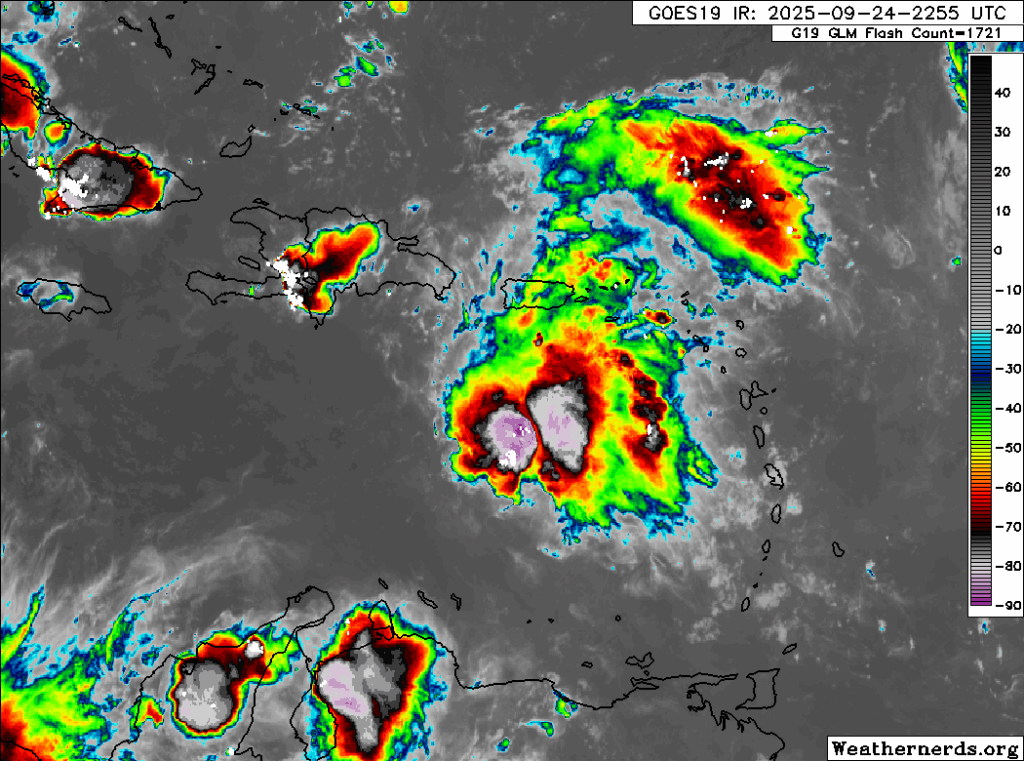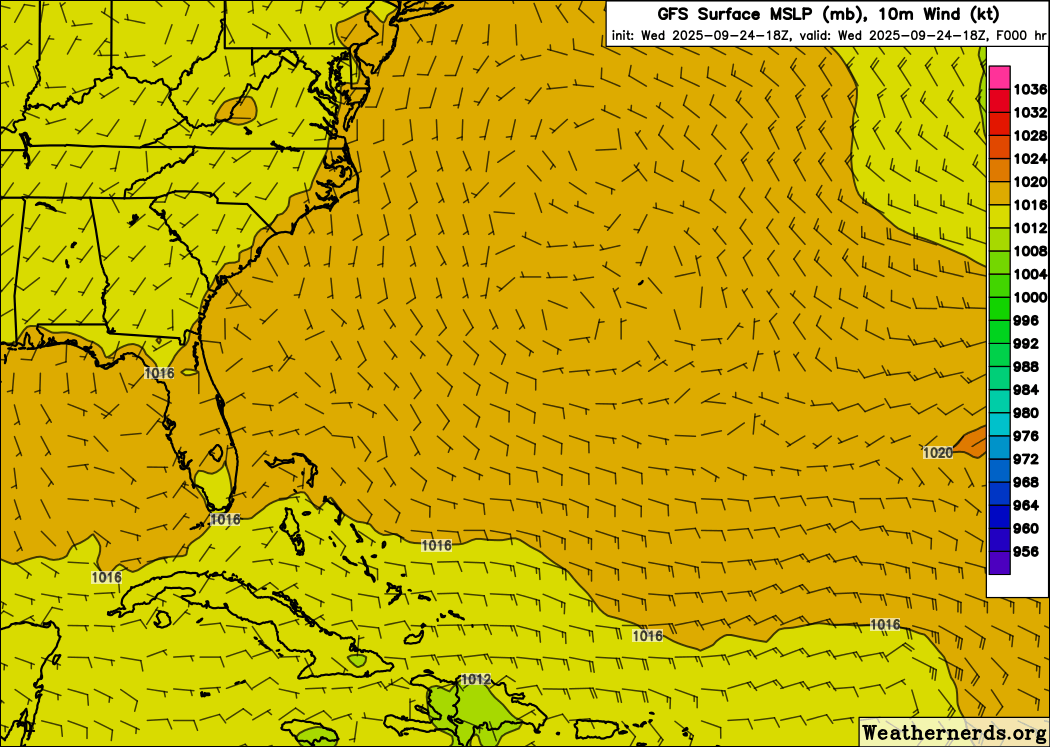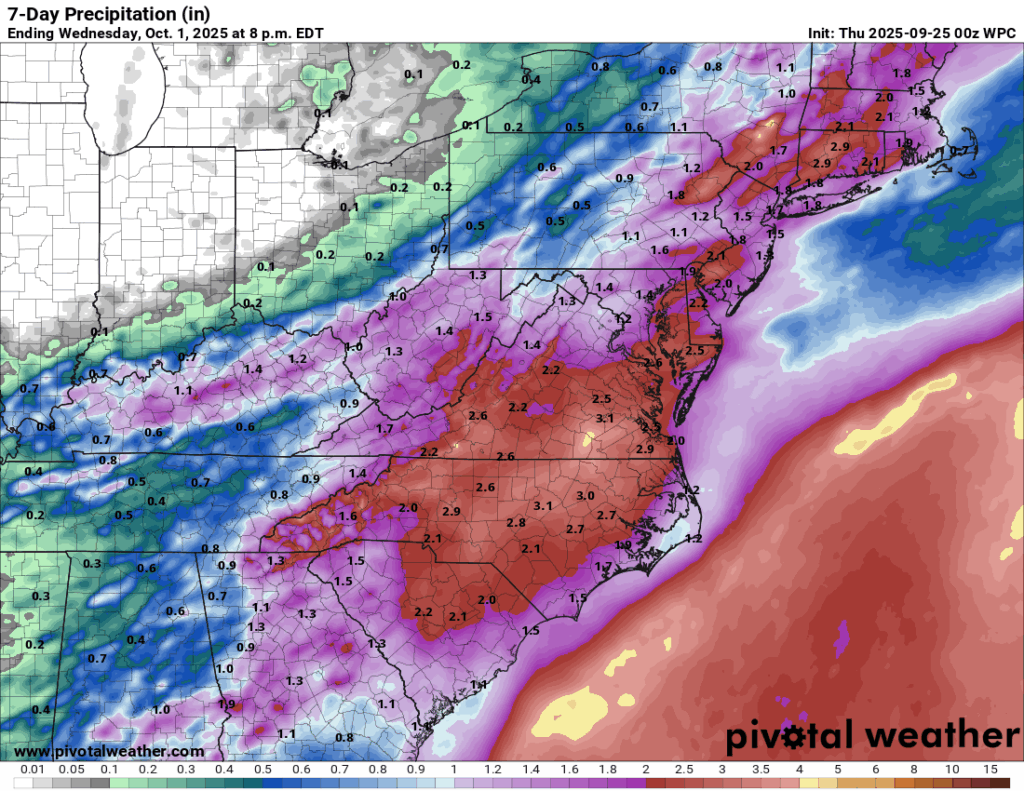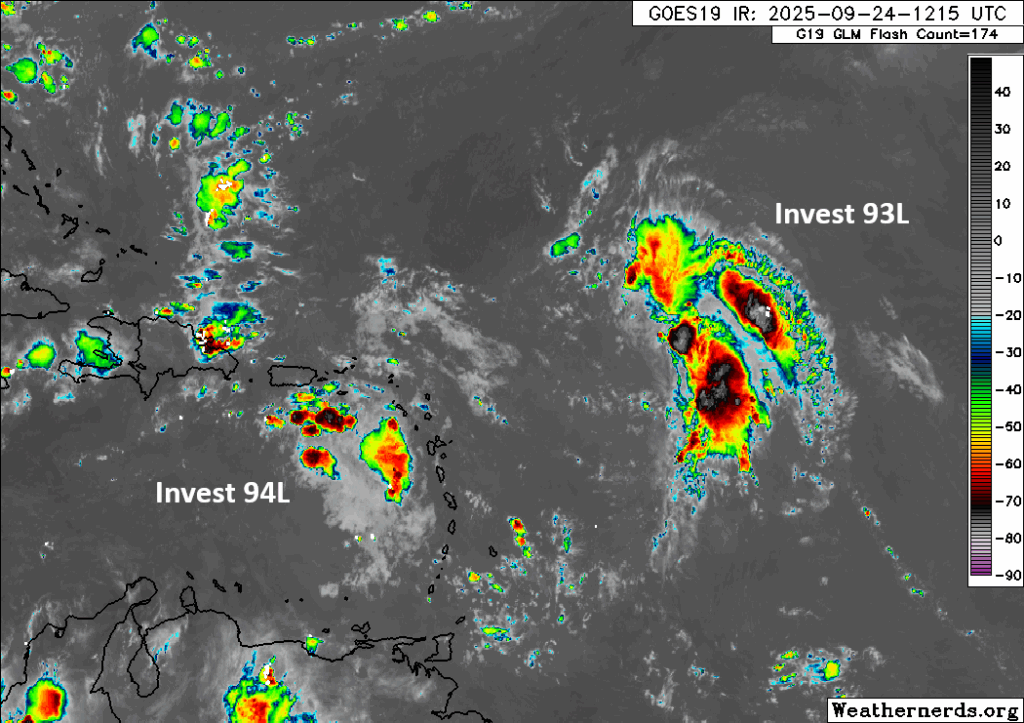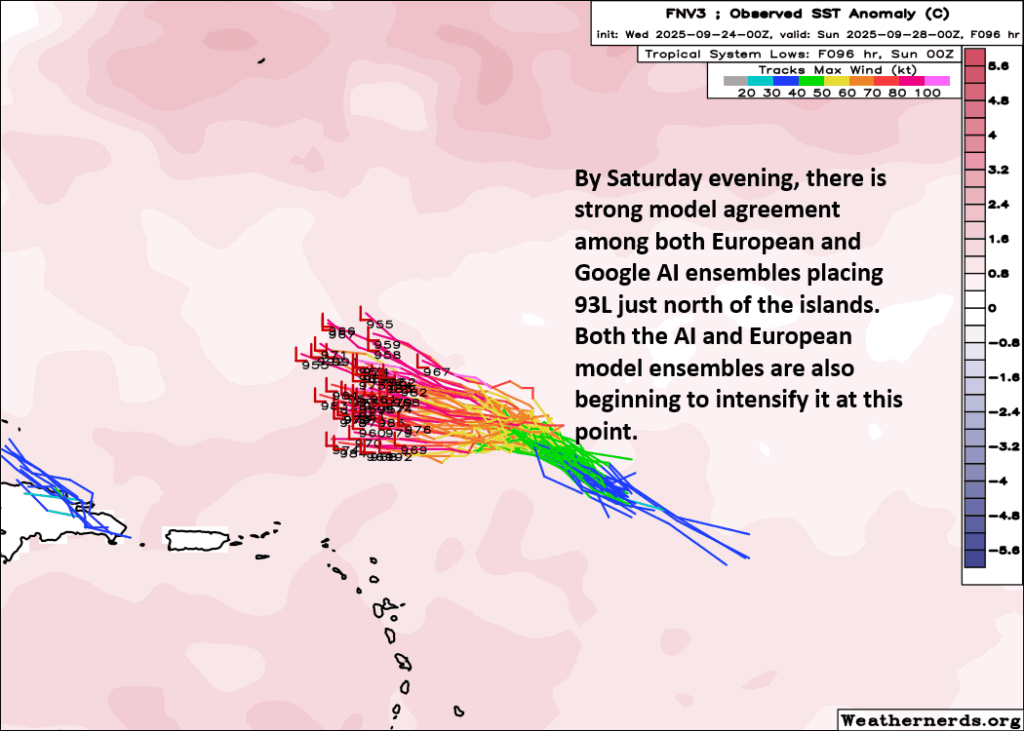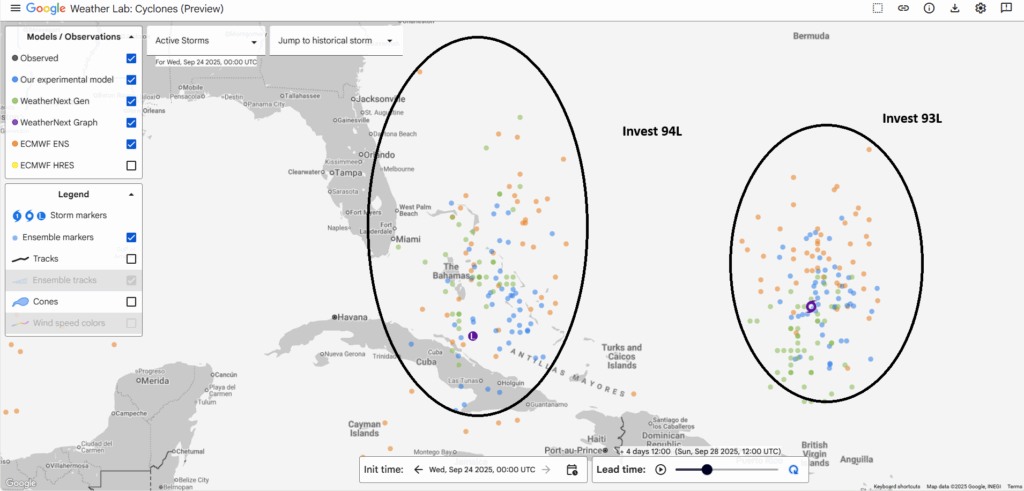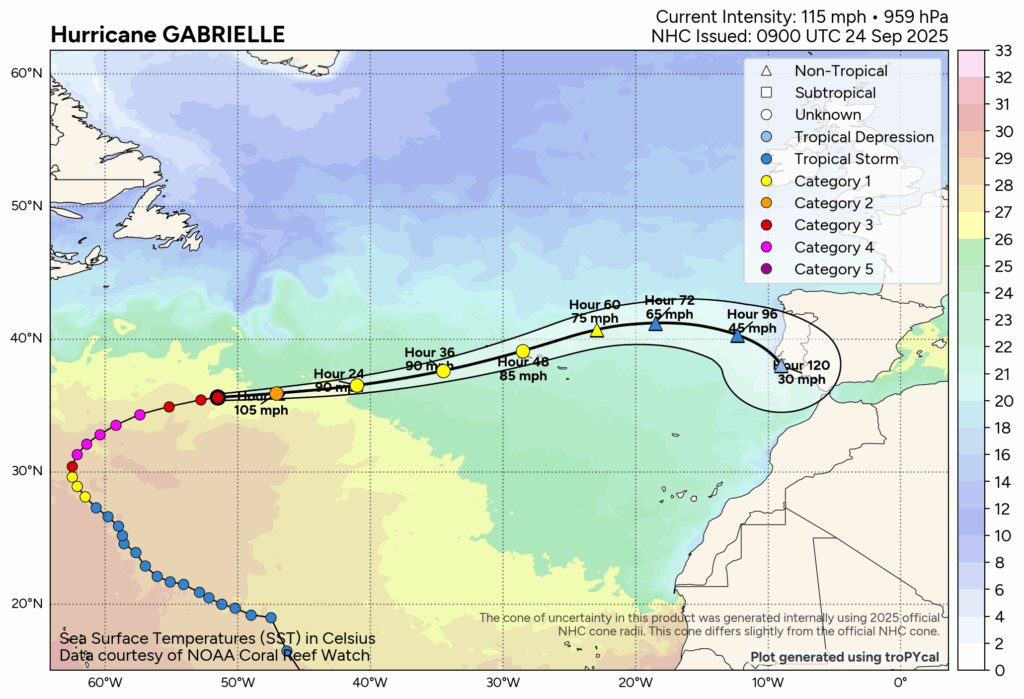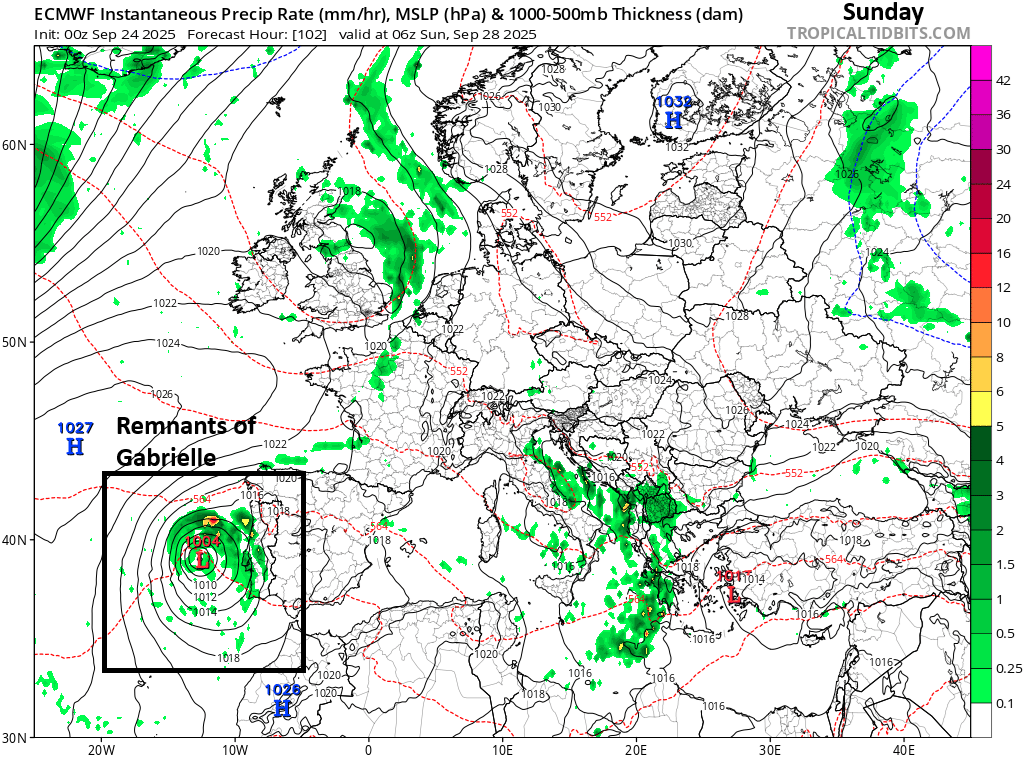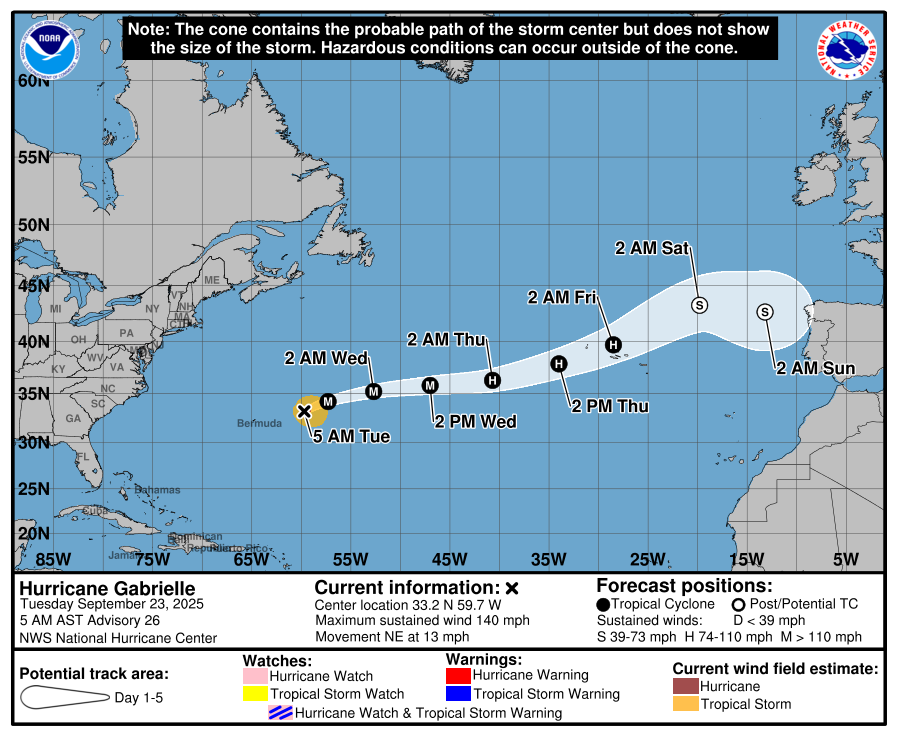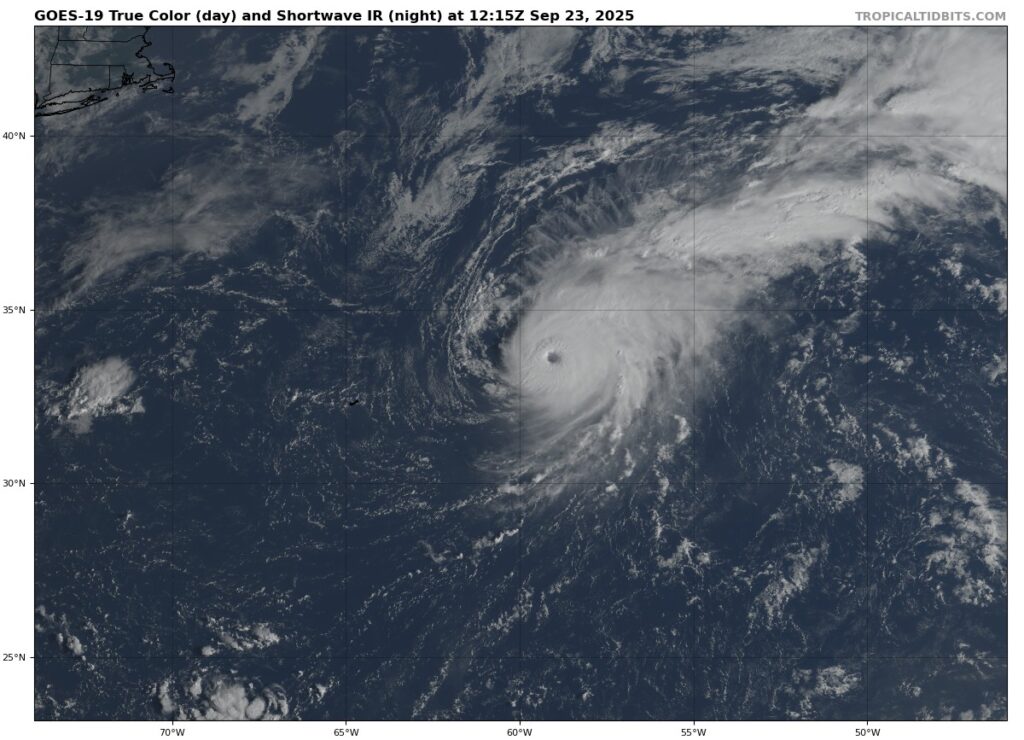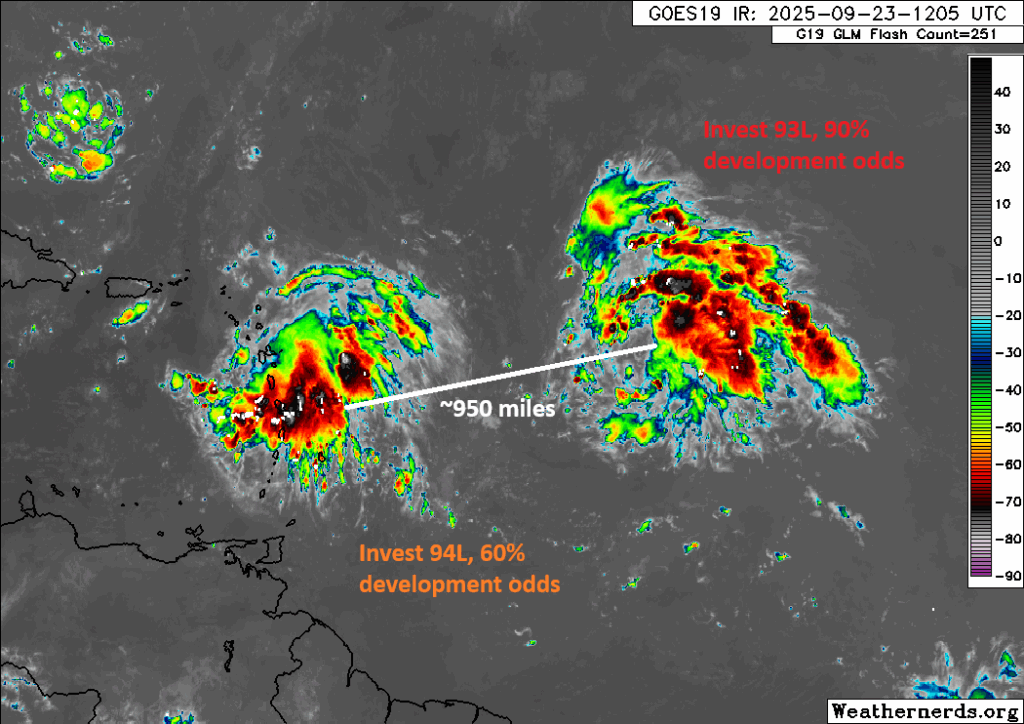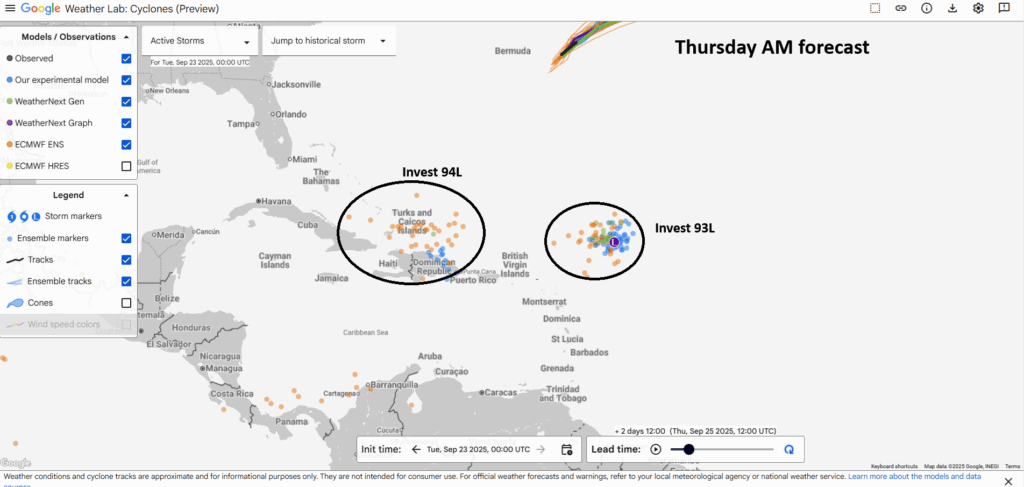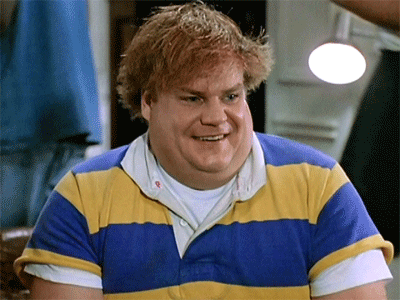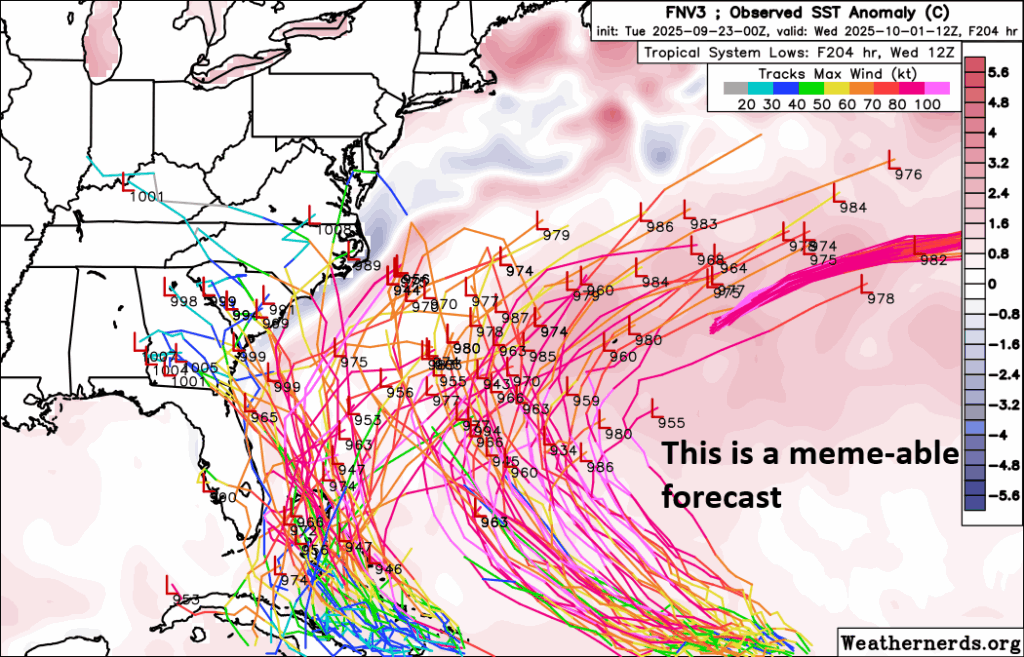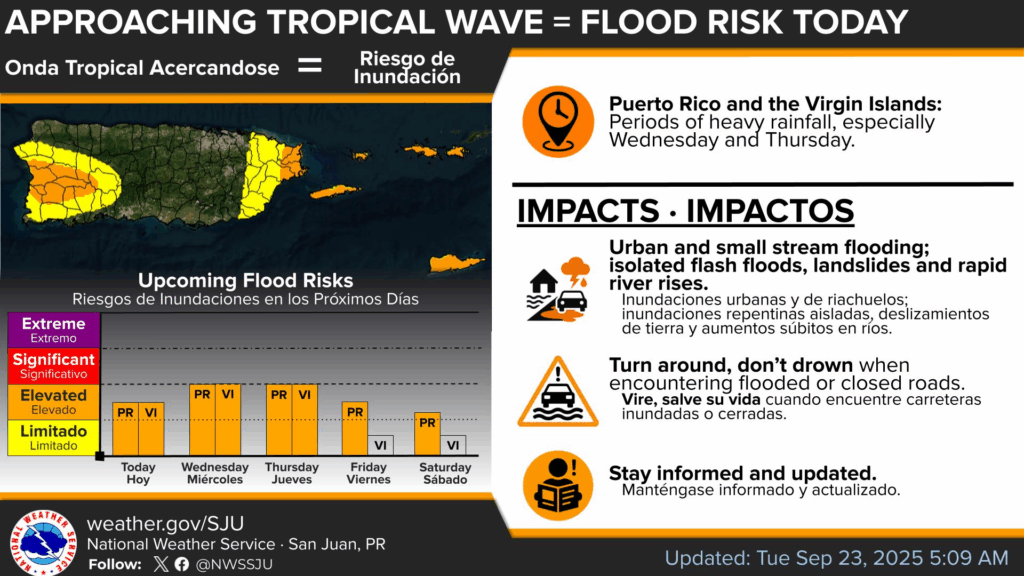In brief: Invest 94L’s forecast is no clearer today, but we have a couple things to discuss related to it. It remains worth watching closely on the East Coast. Meanwhile, Humberto is now expected to become a major hurricane while passing southwest of Bermuda. Then we have Gabrielle which will impact the Azores with hurricane conditions tonight and make a brush with Portugal and Spain later this weekend.
Invest 94L
We’ll get to the named storms shortly, but let’s take stock of Invest 94L this morning.
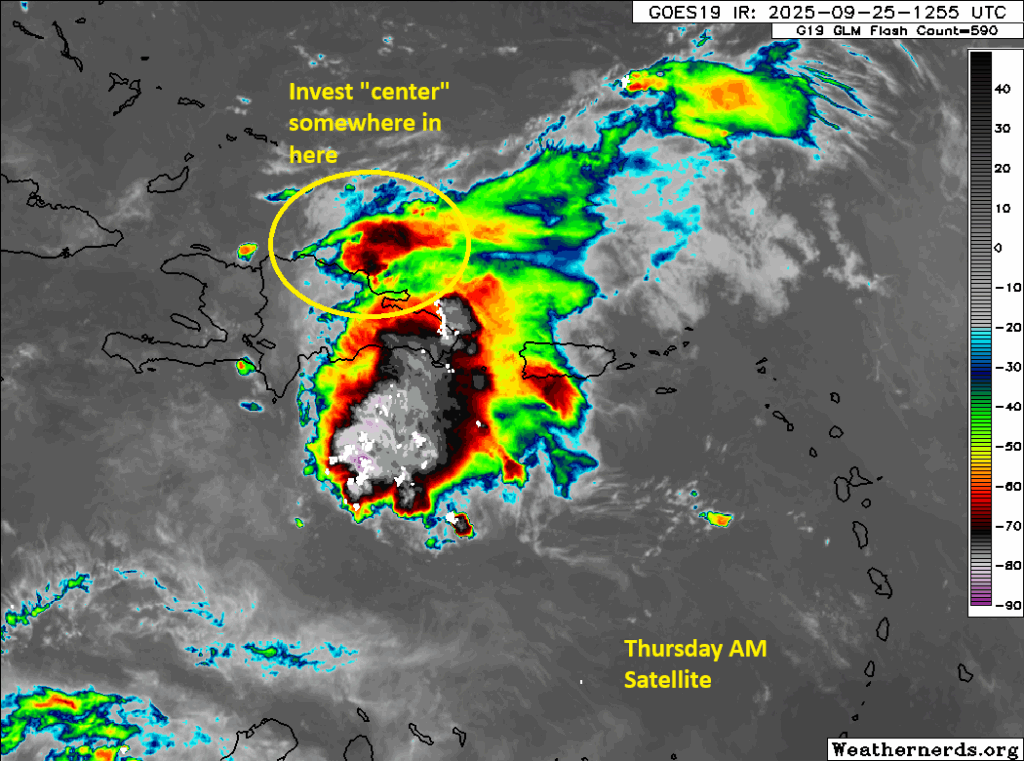
Right now, the Invest is not terribly well organized, though it does give off a rather healthy-looking appearance. The surface “center” is presumed to be somewhere just north of Hispaniola, while thunderstorm activity is displaced mainly south and east of there, closer to a mid-level low pressure. So, we continue to see everything related to 94L right now looking rather disjointed.
As the wave moves into the Bahamas, it will encounter a slightly more hospitable environment to begin to try and organize. This probably won’t occur until late tomorrow or Saturday. If we see organization, it will probably begin later Saturday or Sunday.
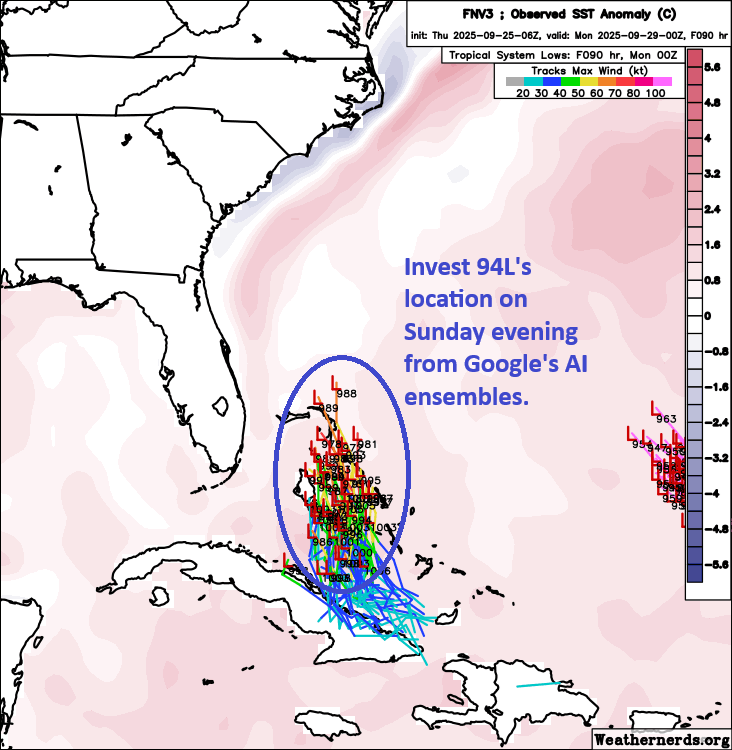
By the time we get to Sunday evening, we actually have some growing model agreement in the general track of 94L, which is to say it will track off to the north-northwest. However, there is a massive difference in where along that path Invest 94L will be. Some European and GFS ensemble members have it passing just off the North Carolina coast. Others keep it locked up down near Cuba. There is some cross-track spread and a lot of along-track spread. The Google AI look above represents a happy medium of everything right now I think. And you can see how uncertain the placement is. This is important because where it sits and how close to Humberto it is will have implications on future track.
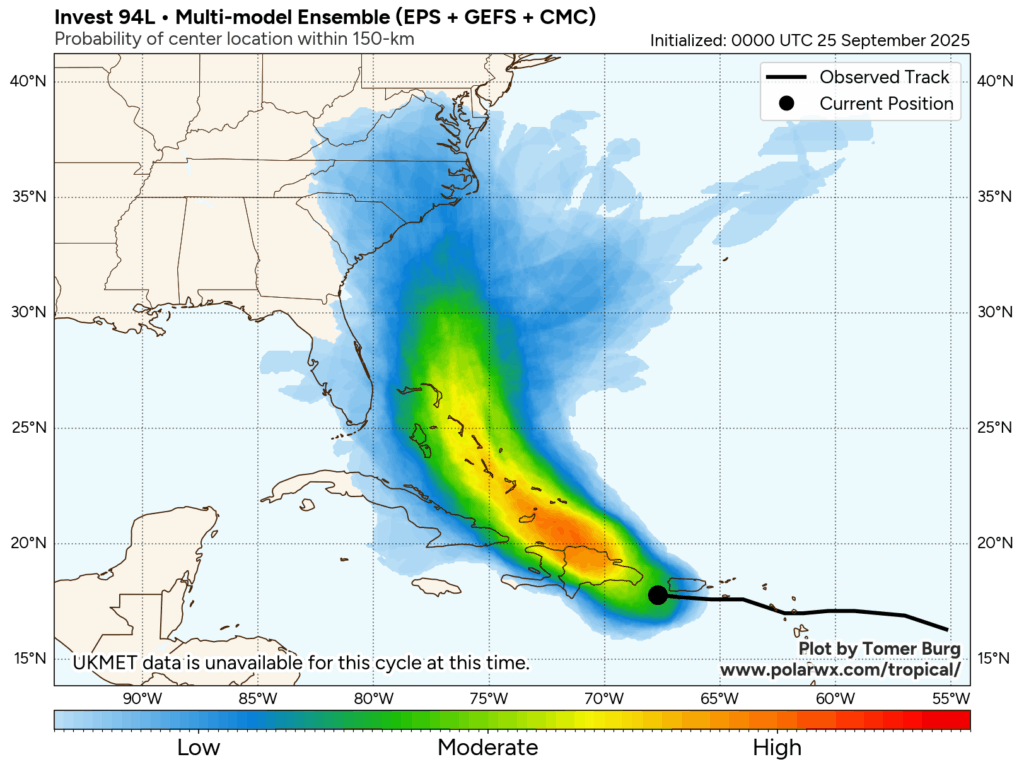
But in general, I think what we’ve seen since yesterday is probably a slightly riskier track for the East Coast, as the model guidance has trended a little to the west. Of course, Humberto’s track has also trended a bit farther west too. Confidence remains low, and most of what I would say beyond Sunday is just rampant speculation at this point.
Bottom line: Continue to monitor Invest 94L if you live on the East Coast, particularly in the Carolinas and Virginia. But we have a long, long way to go.
Heavy rain seems likely regardless in the Carolinas and Virginia. We’ll continue to update that into the weekend.
Tropical Storm Humberto
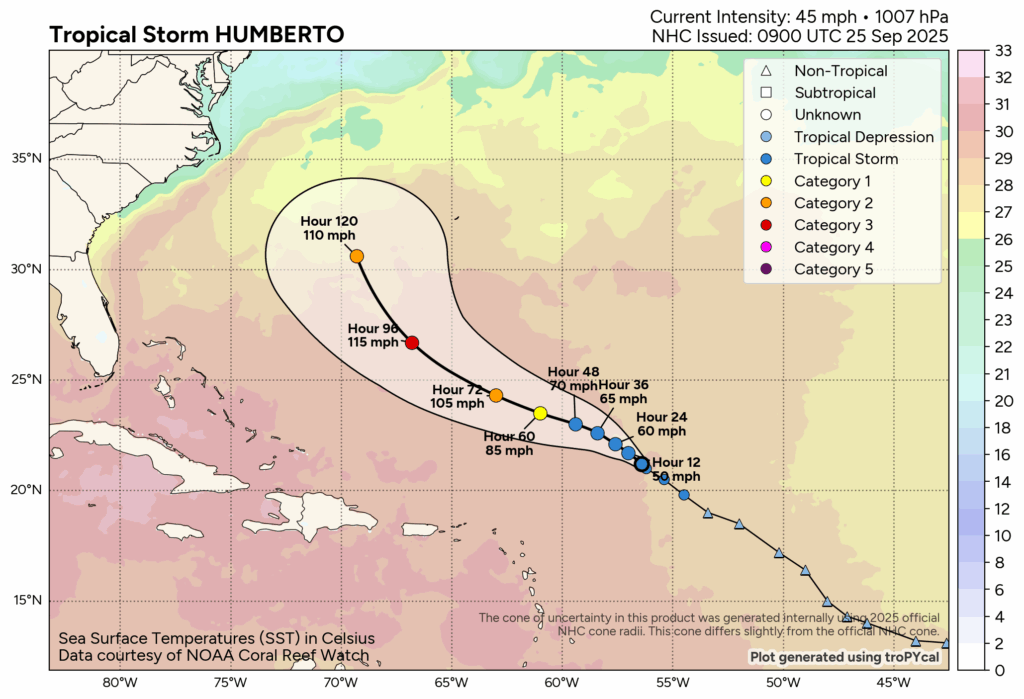
Humberto is getting its act together this morning. Slow strengthening is expected to continue, and Humberto should become a strong tropical storm by tomorrow morning and a hurricane by Saturday. The track of Humberto takes it over some of the warmest water in the southwest Atlantic outside the Caribbean islands, so it will have a good deal of energy to work with.
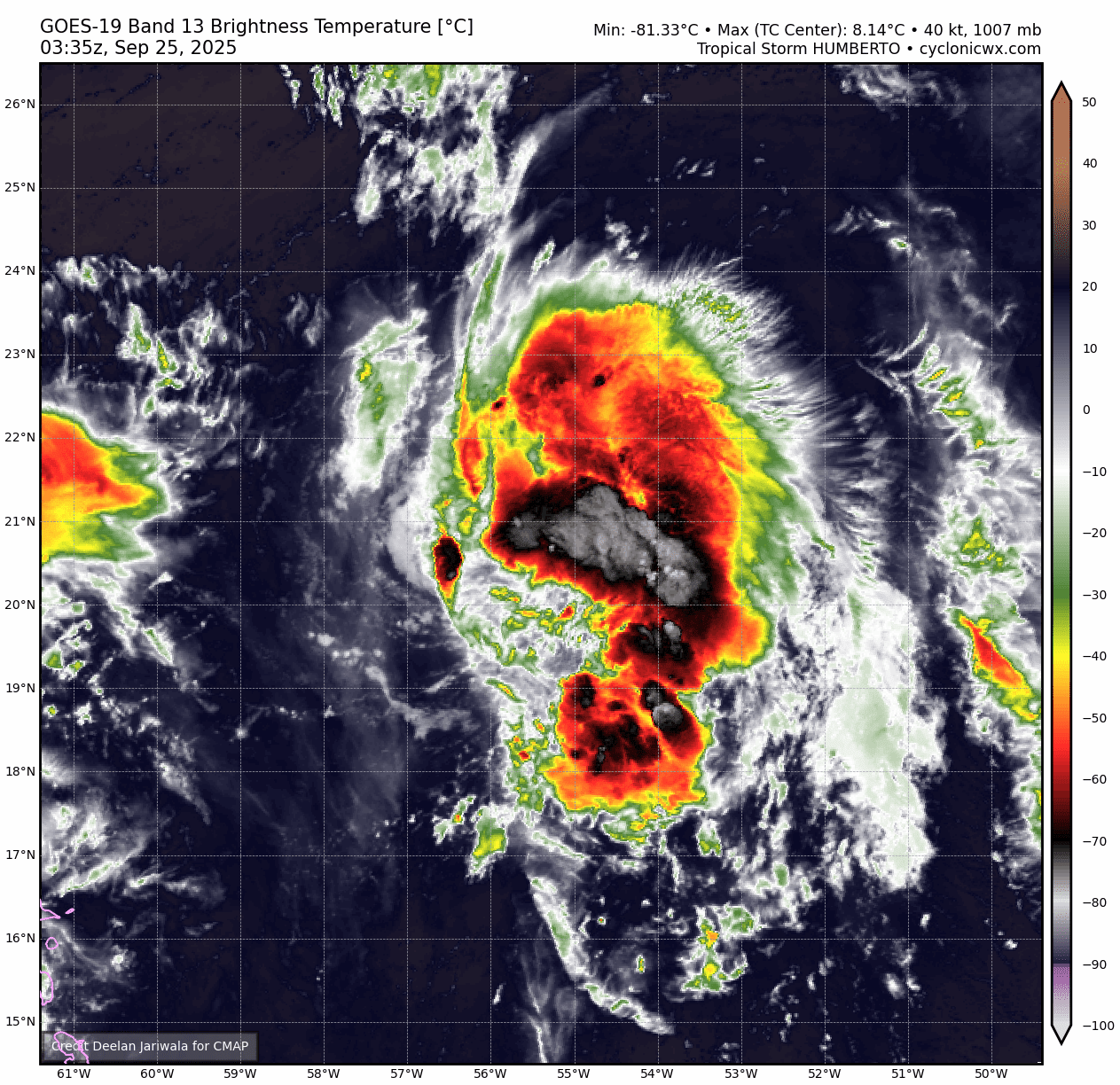
Humberto will remain well offshore, but the question becomes whether or not it will impact Bermuda. As of now, with the westerly trends we’ve seen since yesterday, this appears to build confidence that Humberto should remain to the west of Bermuda. However, depending on its size and intensity, some degree of direct storm impacts are possible in Bermuda as it passes. But it’s too soon to say anything with much confidence. We’ll also see how much intensity Humberto can gain in the next 72 hours. SHIPS model guidance shows a 2 to 3 times greater than climatology chance of rapid intensification, slightly lower odds than we saw with Gabrielle but still a bit higher than is typical. We’ll watch through the weekend.
Hurricane Gabrielle
Gabrielle is still a hurricane this morning, though it is clearly interacting with colder water, causing it to lose a bit of steam.
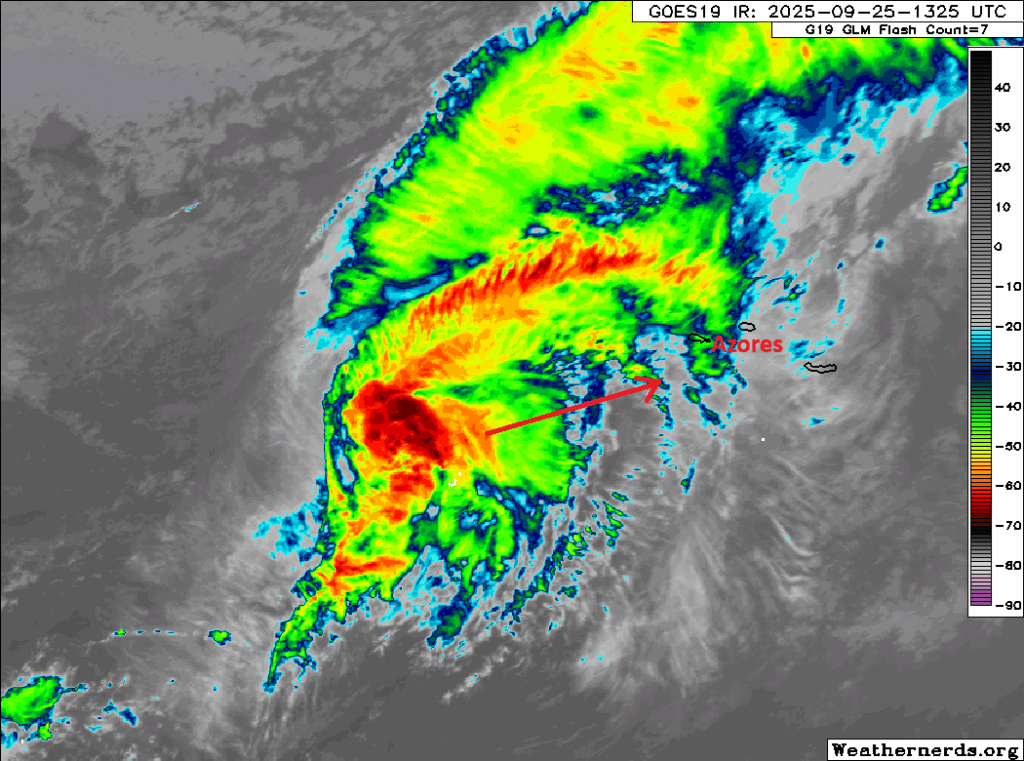
Despite this, Gabrielle is an imminent threat to the Azores, and hurricane warnings are posted there. If you look closely at the European model forecast of winds today through tomorrow, you can see how Gabrielle weakens in the near-term but then fires back up hurricane-force winds (red) as it crosses the Azores tonight and early tomorrow.

This extratropical transition process can be deceptive. In theory, the storm is losing hurricane characteristics, but often times, that transition to a more jet stream dominated storm rather than a tropical/warm water dominated storm can lead to a burst of intensification. Think about Hurricane Sandy in 2012. That was technically no longer a hurricane, but a potent jet stream made it behave identically to one. Same goes for the Azores tonight; Gabrielle will be making that transition, but the impacts on the ground will be the same: Hurricane-force winds, rough seas, heavy rain, and surge.
From the Azores, Gabrielle will continue to track toward Europe, where it shall retire in leisure. Let’s extend that wind forecast above out through the weekend.
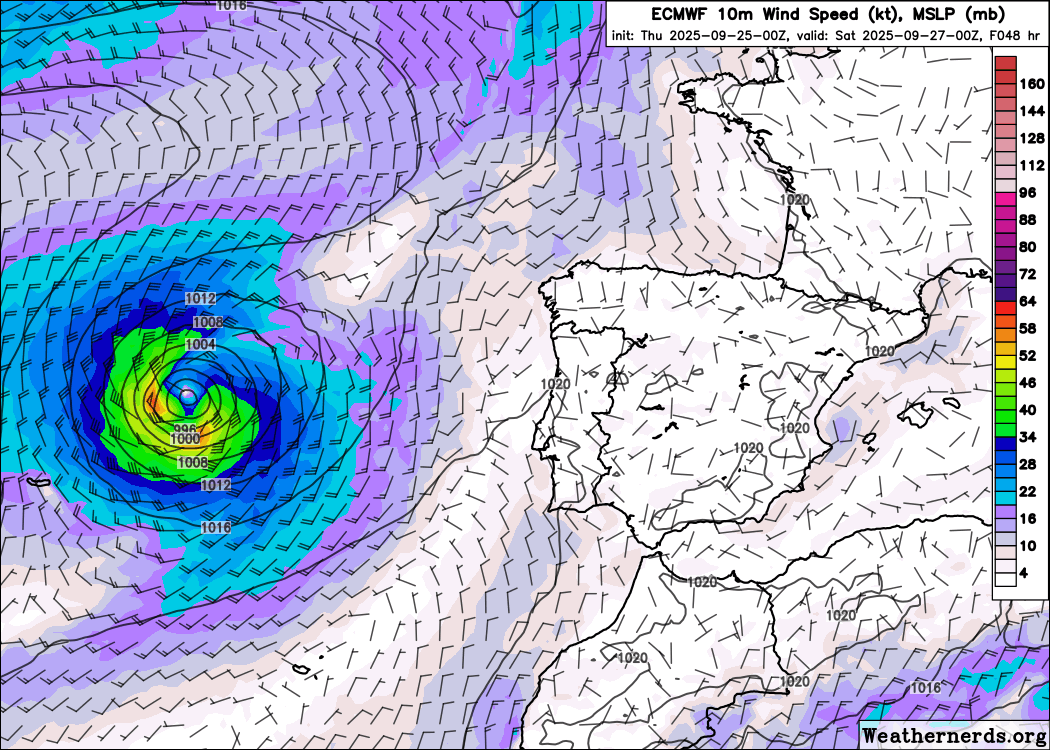
You can see that Gabrielle’s tropical storm force wind field (in green) disintegrates as it approaches Portugal. Thus, we don’t expect tropical storm impacts in Europe. We could still see some heavy rain or gusty winds and rough seas, particularly in southern Portugal. Current European model forecasts call for about 15 to 30 mm of rain (0.6-1.1″) in parts of southern Portugal and southwest Spain.
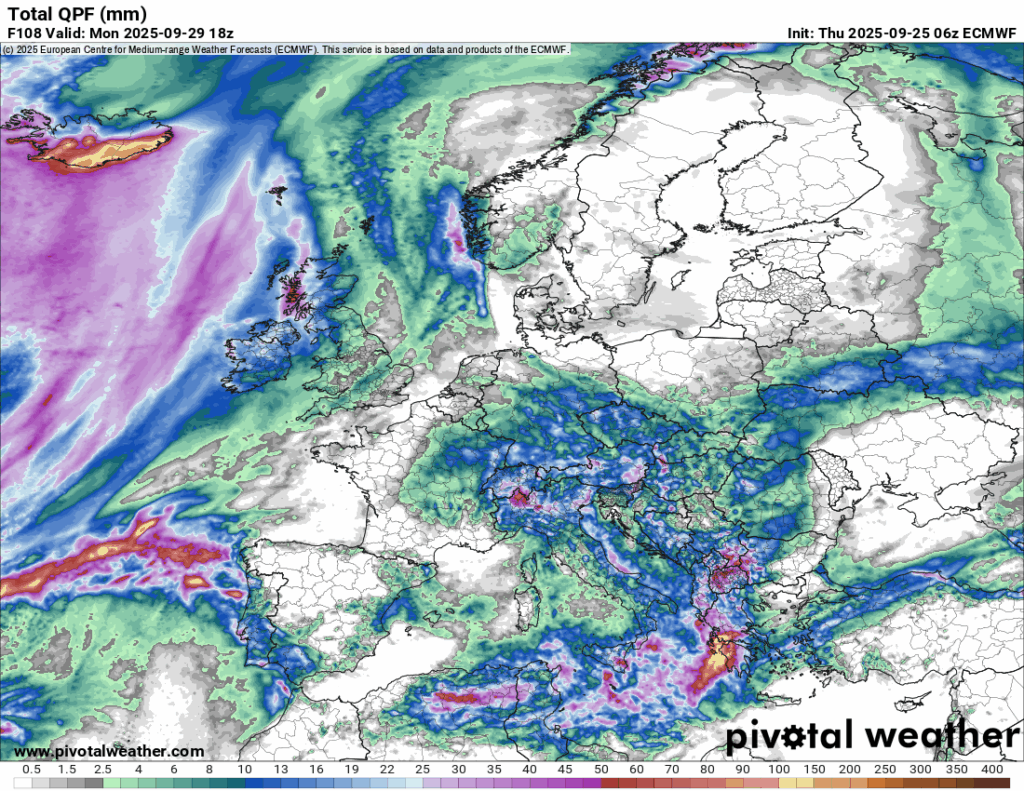
Rain would be most welcome in northern Portugal, which is in significant drought at the moment.
